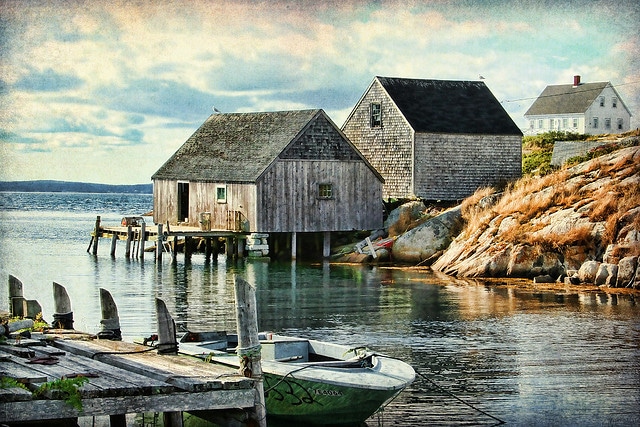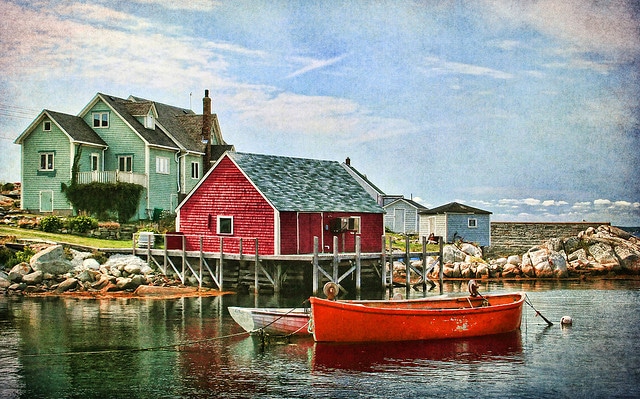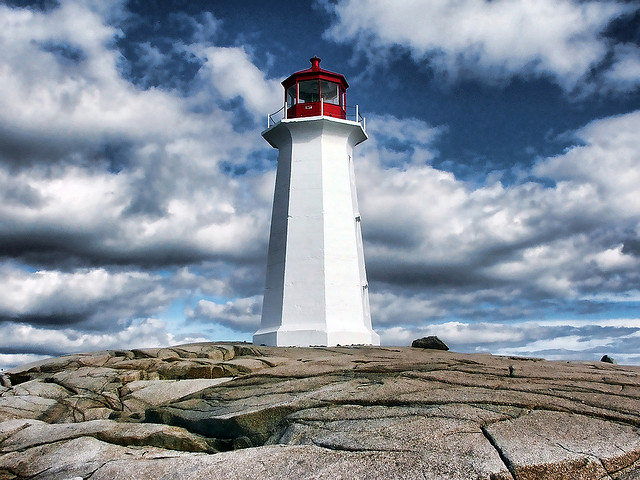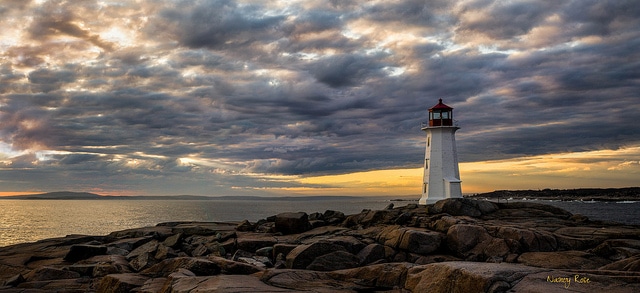If you are going to Nova Scotia, remember to wear flowers in your hair as if you were going to San Francisco, and also to visit a quaint place that will make you feel as if you were in one of those paintings in a Canadian rural house. We are talking about Peggy, a fishermen village and its spectacular lighthouse:
Peggy’s Cove
The village of Peggy’s Cove appeared in 1811, when the province of Nova Scotia issued an aid which entitled six families of German ancestry to more than 320 hectares of land. As they built up their community around a cove, settlers depended on fishing as one of the pillars of their economy. They also planted gardens in those places where land was fertile and used the land surrounding the village for cattle shepherding. In 1900 the population reached about 300 people and had a school, a church, a grocery store, a lobster cannery and boats of all sizes located in the cove.

Since its origins, many artists and photographers approached Peggy’s Cove, and as they improved road communications, even more people came. However the current population is much smaller and Peggy’s Cove remains as a quiet fishing village, now that in an effort to preserve the unique beauty of the area Peggy’s Cove has been declared protected area. Thus it is no longer allowed to build more houses and there are restrictions on who can live in the community to prevent inflation of property values of those who reside there permanently.

Peggy’s Lighthouse
Built in 1868, the first lighthouse at Peggy’s Cove was simply a wooden house surmounted by a beacon. Every night the lighthouse keeper lit a kerosene lamp and to increase its brightness he used a reflector that transformed it into a red light. Thereby he managed to signal the eastern entrance to St. Margaret Bay (Peggy is the nickname of Margaret although legend has it that the town’s name comes from the only survivor of a shipwreck in the nineteenth century).

In 1914 they replaced this humble building by an octagonal lighthouse made of cement and steel and measuring 15 meters high. It is the beacon we see here today and many claim it is the most beautiful of all Canada (or the hottest!). The lighthouse keeper’s house was not so lucky: it stood by the current lighthouse for forty years until Hurricane Edna destroyed it. Anyway his profession had an expiration date because in 1958 the lighthouse was automated and no longer needed to be cared.

During the summer months the lower level works as the village post office where visitors can send postcards and letters. Each piece of mail is printed with a mark shaped like a lighthouse, to make it clear where it comes from.
Photos: Amanda White and Nancy Rose.














